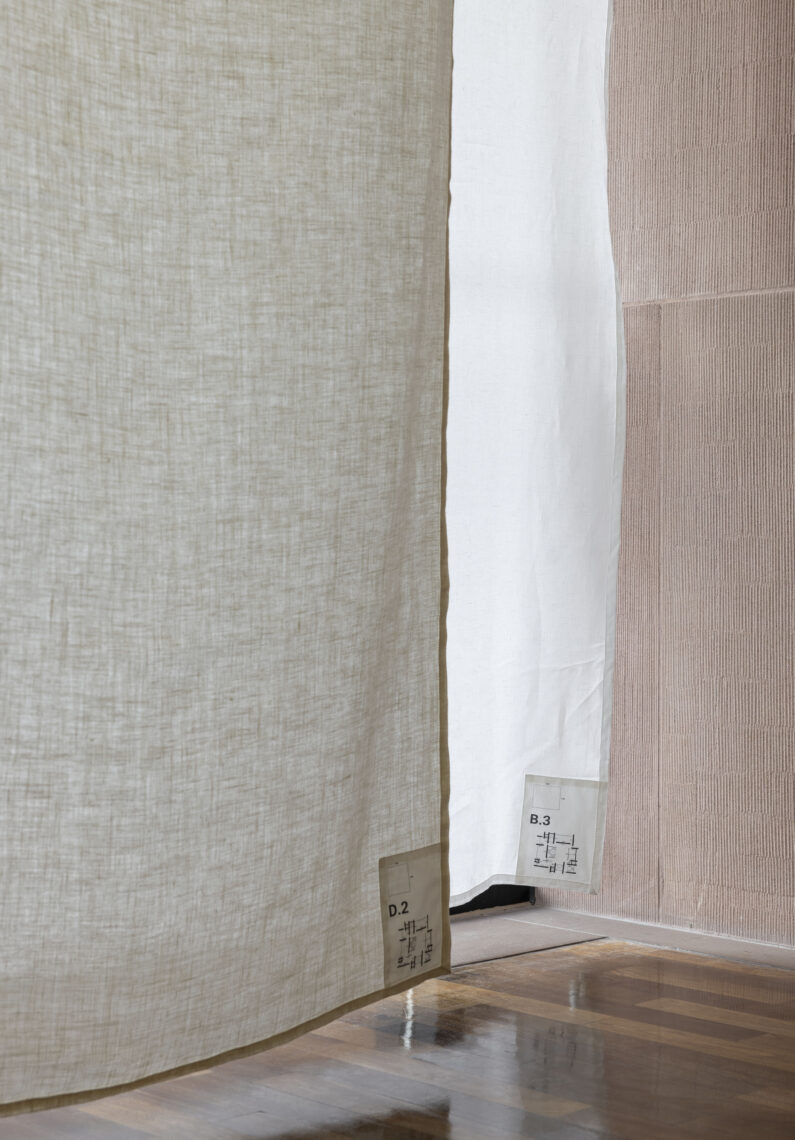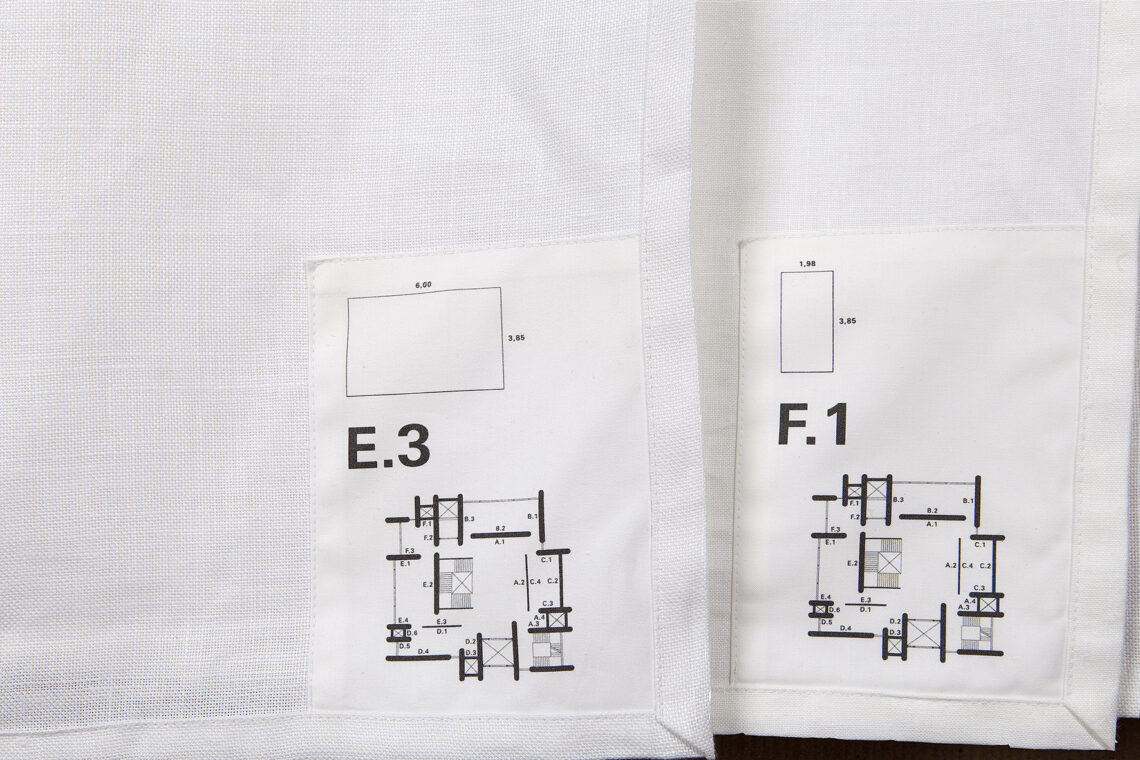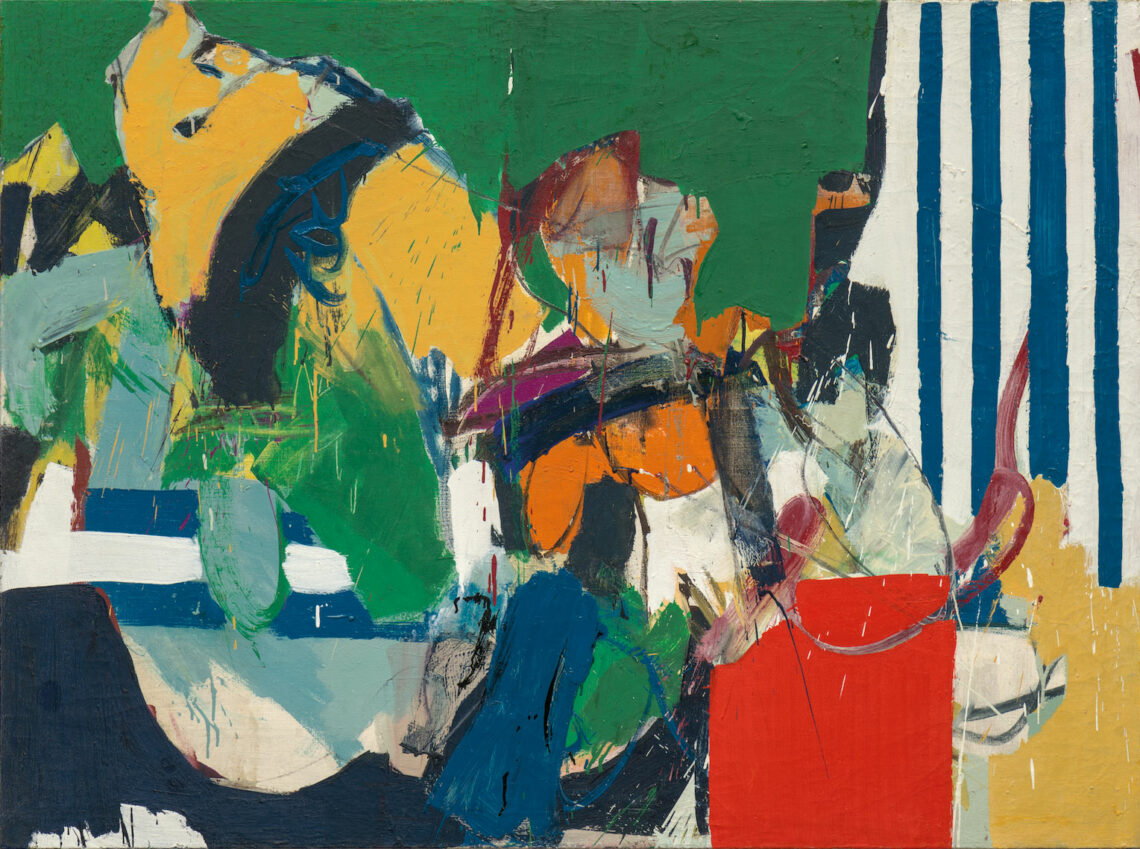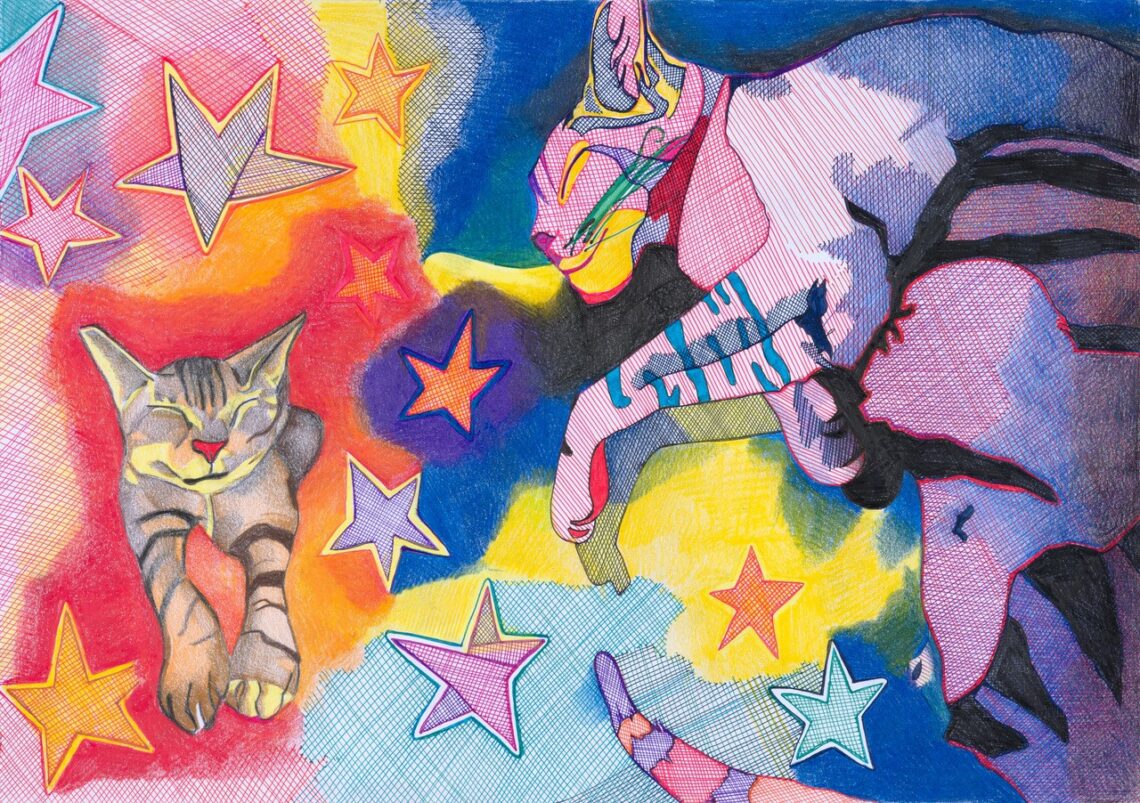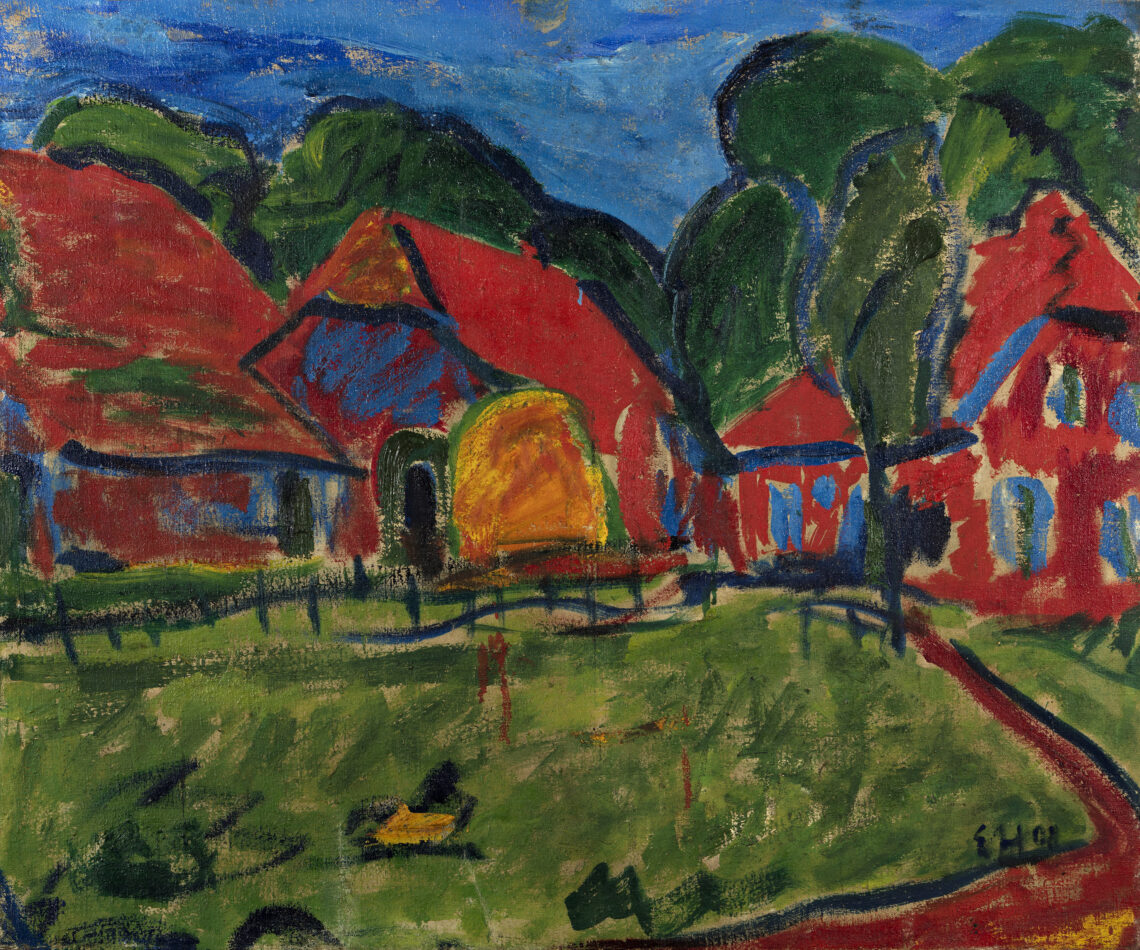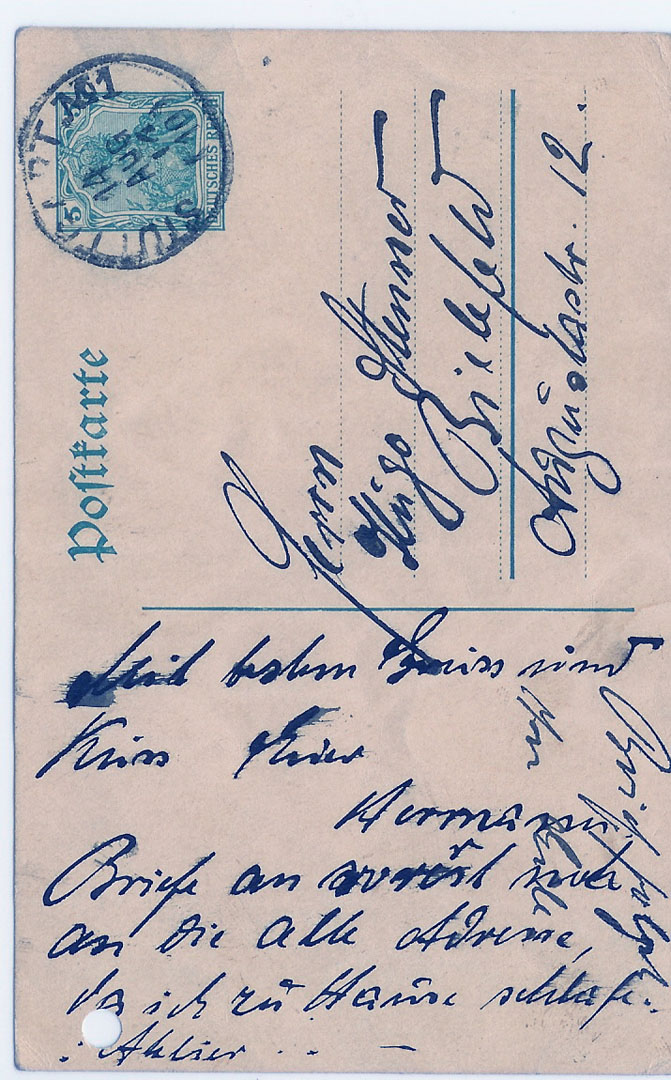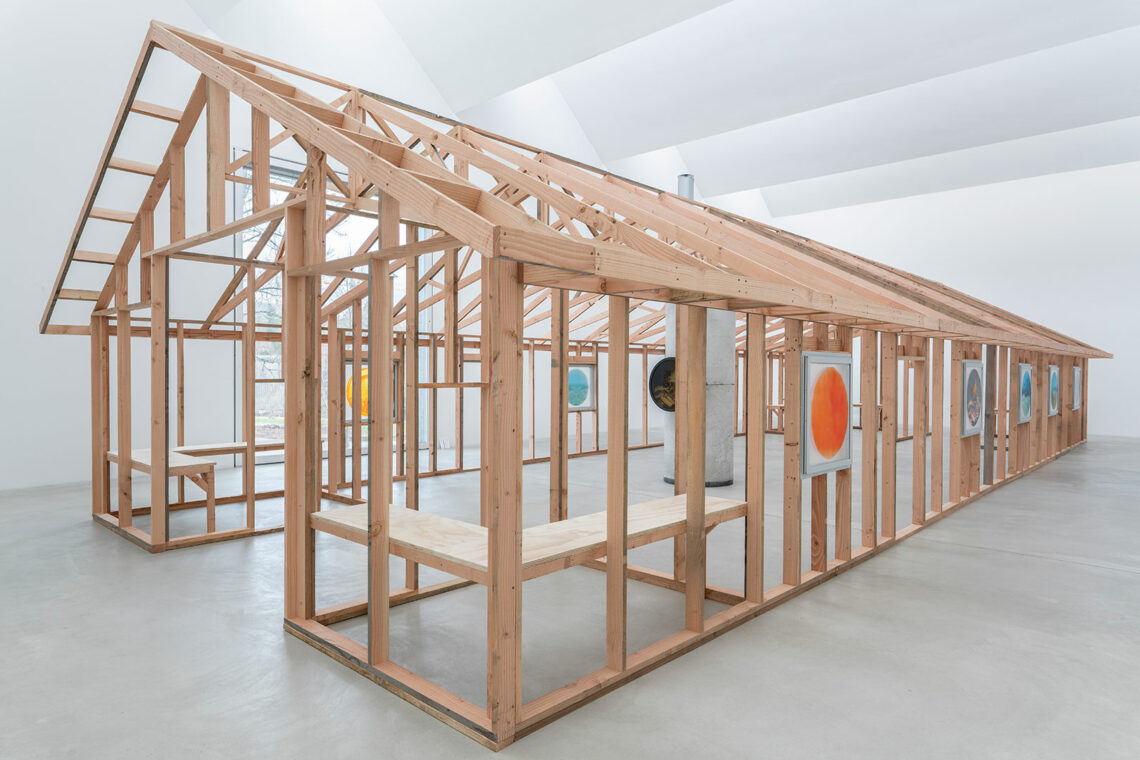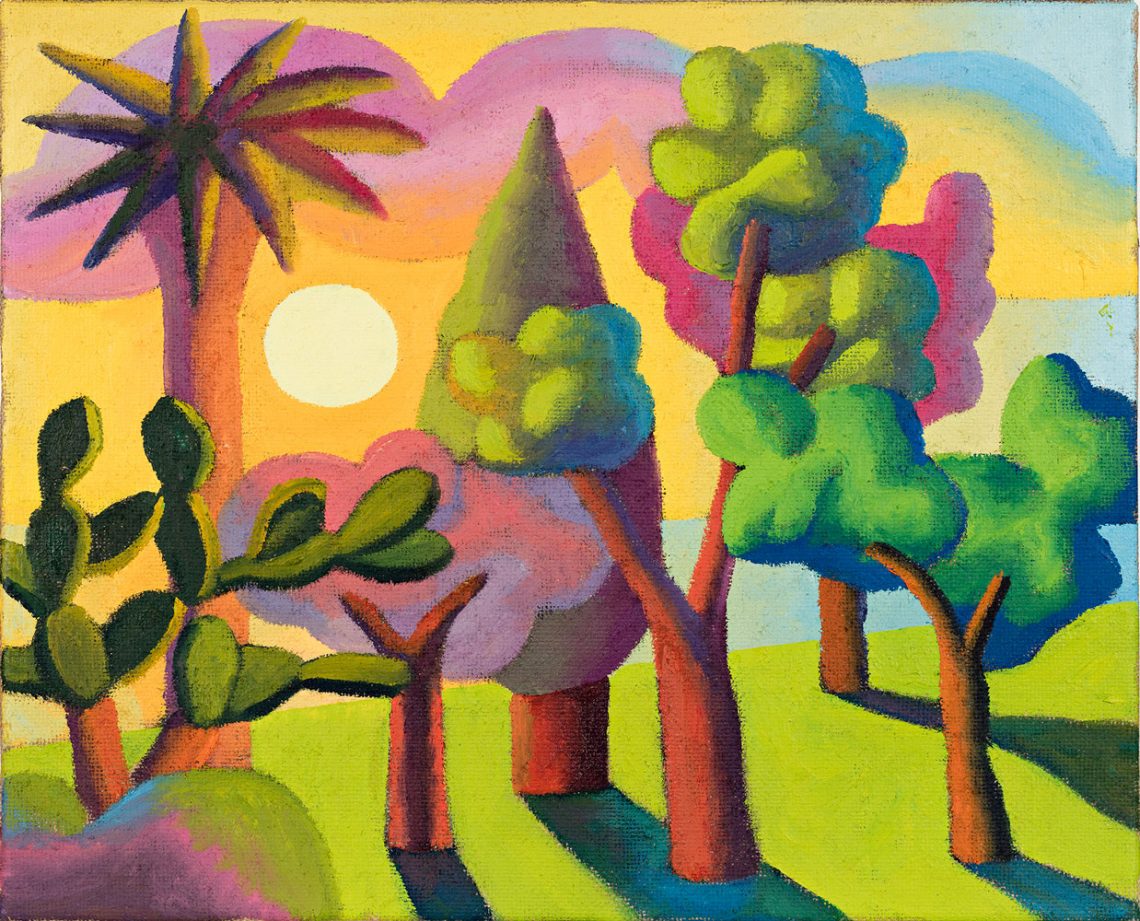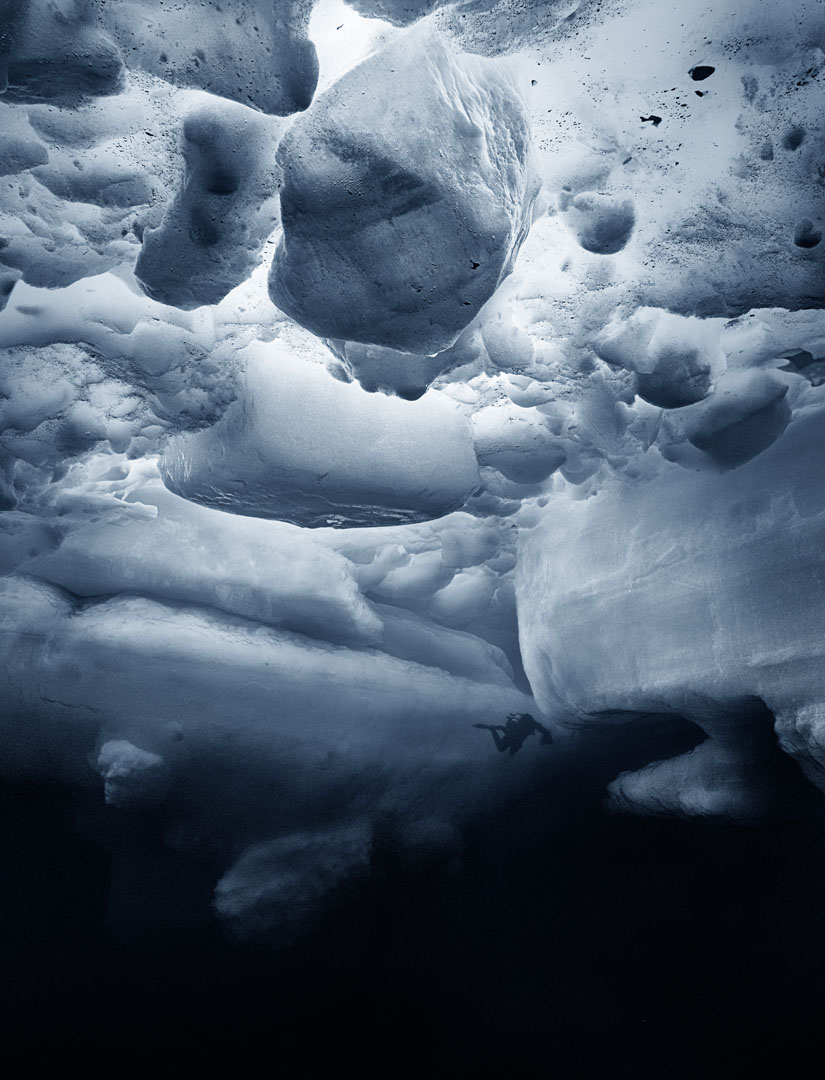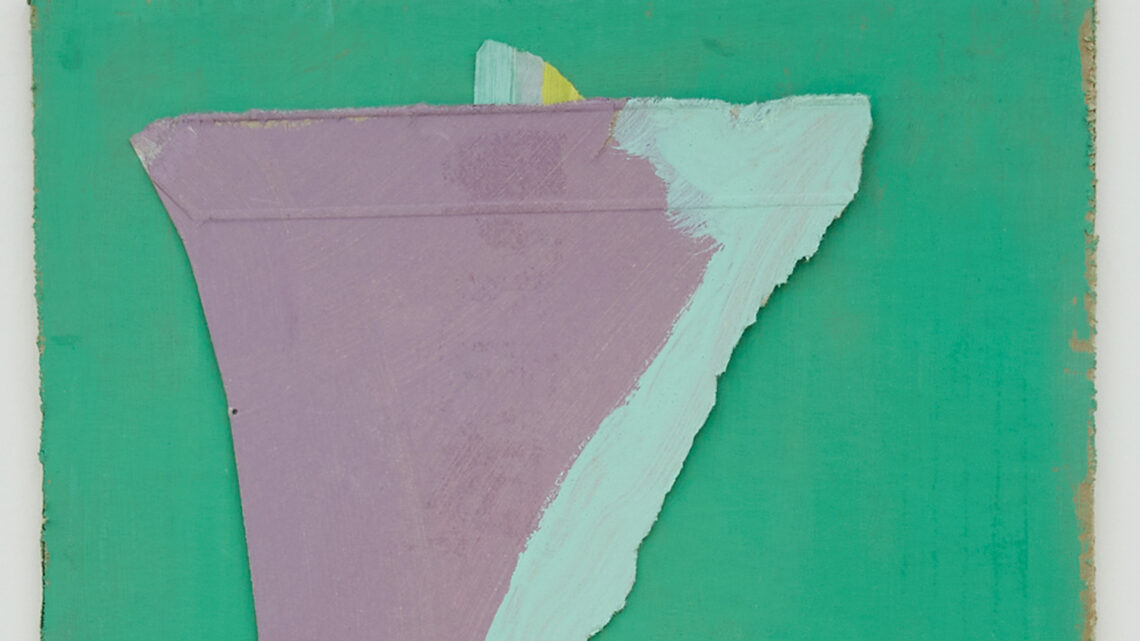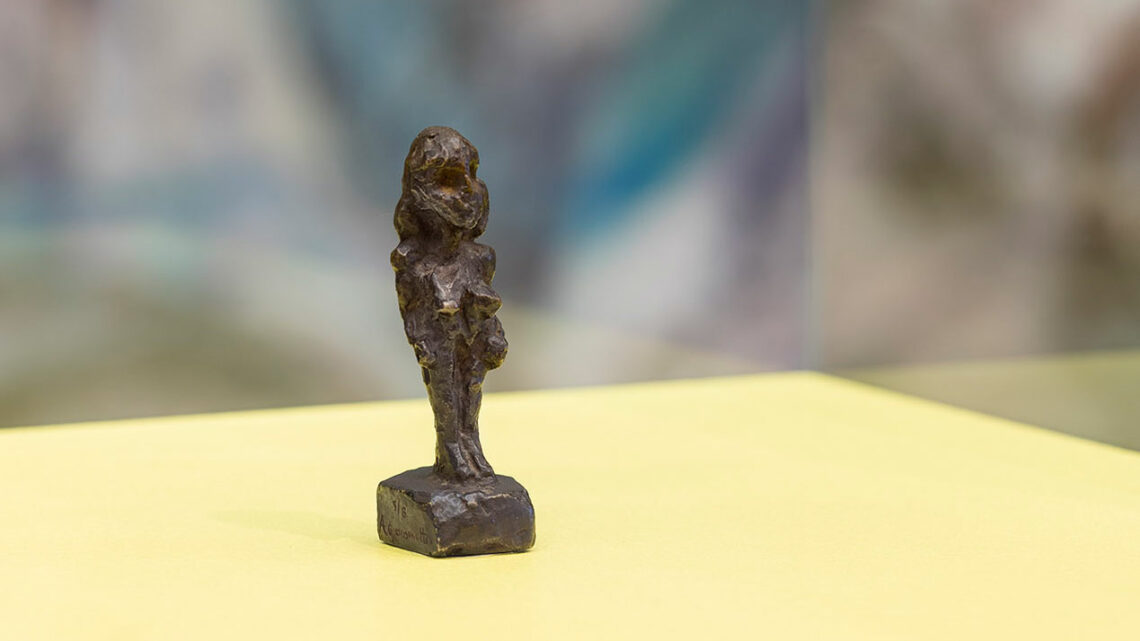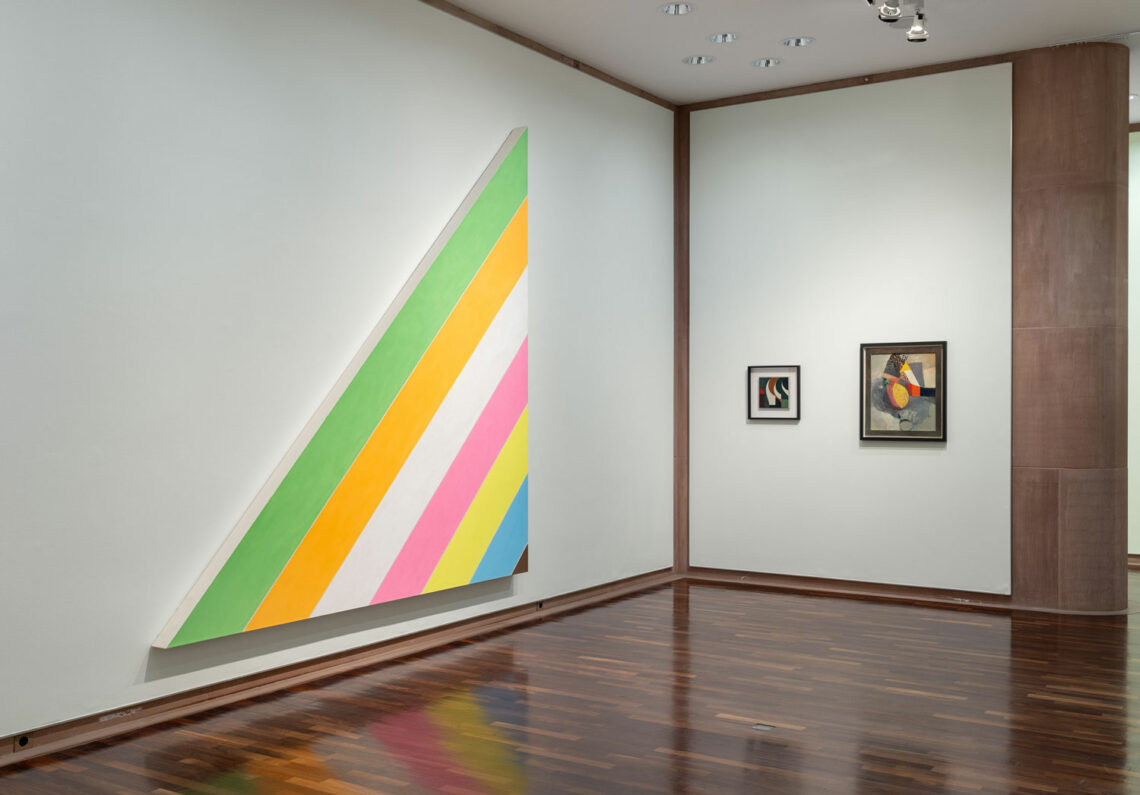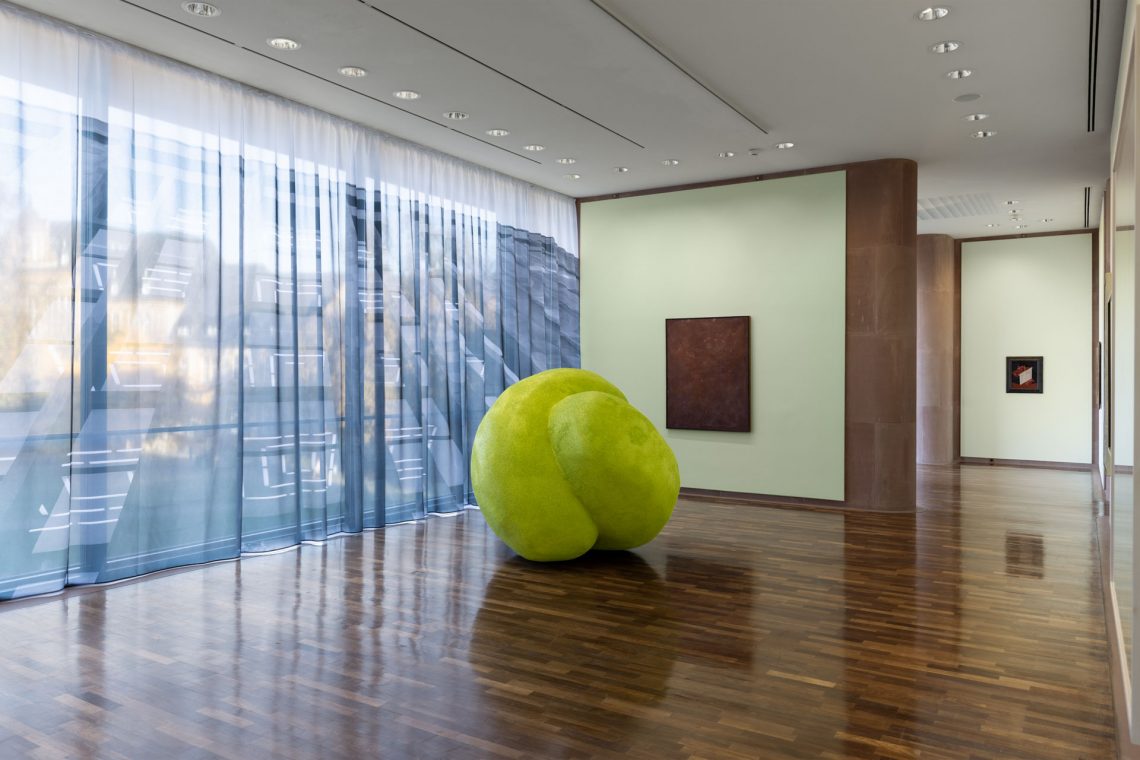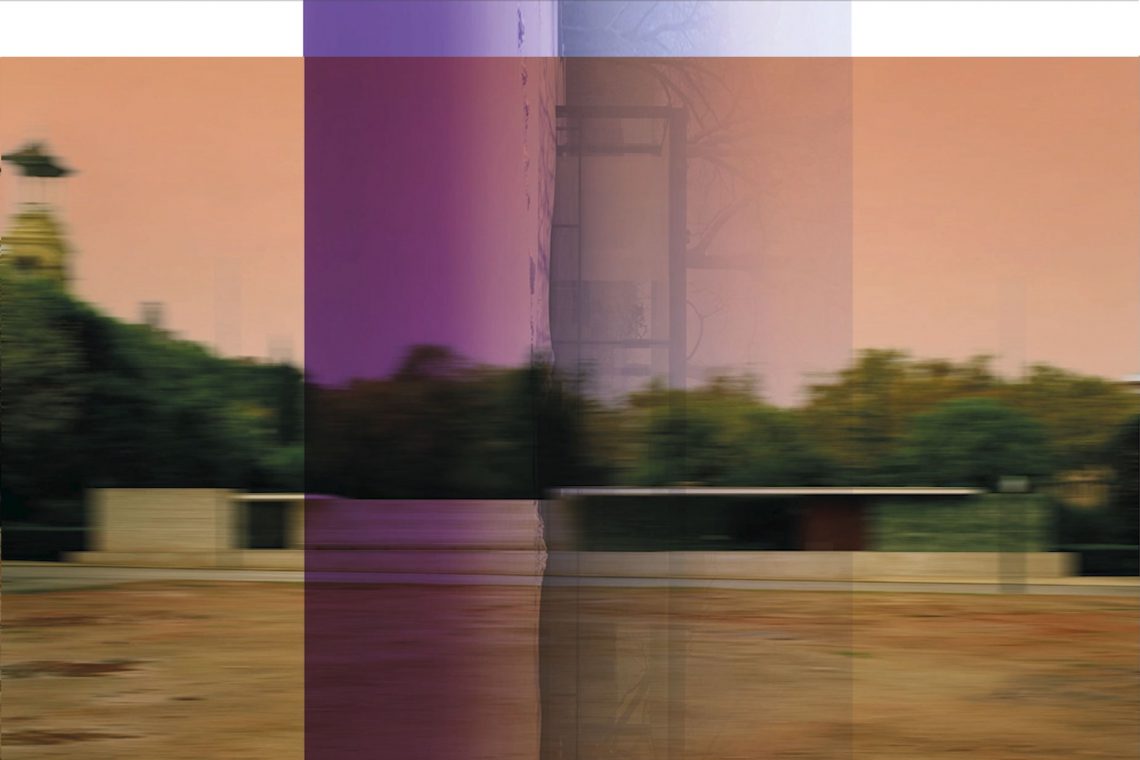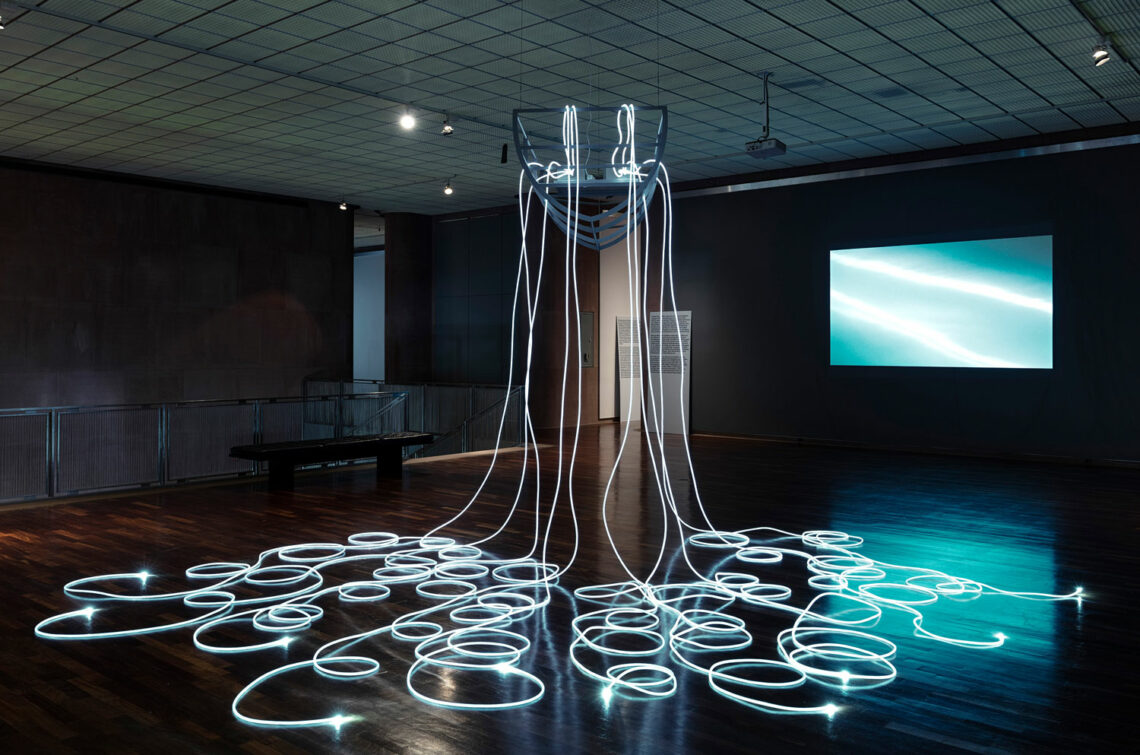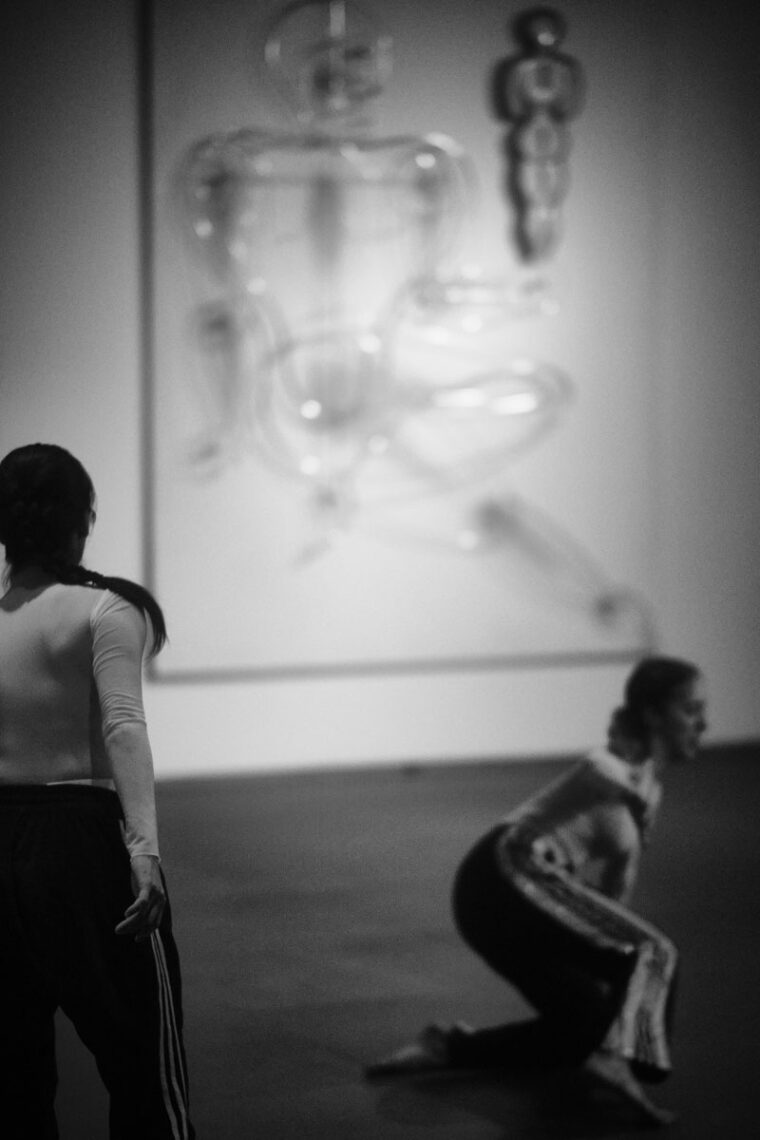Katrin Mayer / Christo
Shroud or unfold. facing each other #8
In the series “facing each other” a work from the collection of Kunsthalle Bielefeld meets a selected loan from another institution. This encounter leads to new, often surprising perspectives. In the eighth installment of the exhibition series, “Package” (1963) by Christo from the ahlers collection and “Screens” (2014) by Katrin Mayer from the Kunsthalle’s collection meet.
A unifying element of both works is the use of textiles, which refer to something underneath. Shrouding has a long art-historical pictorial tradition. While in Christo’s “Package” (1963) a tied-up bundle of linen in an ornate frame becomes a work of art and explodes the pictorial space, Katrin Mayer’s “Screens” (2014) as linen fabrics push themselves multilayered in front of the architecture of the Kunsthalle and thematize the history of the museum’s textile wall panels. Both artists play with the viewers’ expectations and make their role in the interpretation of artworks apparent: What do the textiles show us? Do they keep something hidden or do they open up new ways of looking?
The University of Bielefeld also describes the project in more detail in their Uni-Aktuell-Blog.
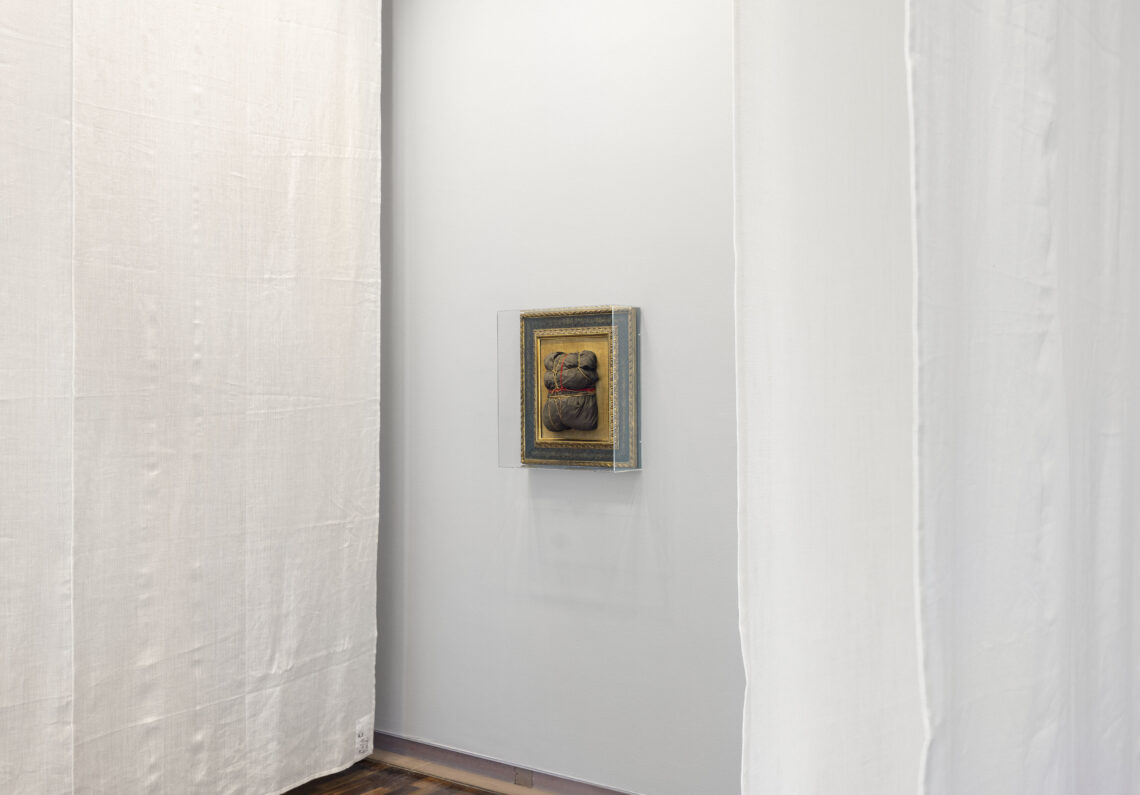
In the series “facing each other” a work from the collection of Kunsthalle Bielefeld meets a selected loan from another institution. This encounter leads to new, often surprising perspectives. In the eighth installment of the exhibition series, “Package” (1963) by Christo from the ahlers collection and “Screens” (2014) by Katrin Mayer from the Kunsthalle’s collection meet. A unifying element of both works is the use of textiles, which refer to something underneath. Both artists play with the viewers’ expectations and make their role in the interpretation of artworks apparent: What do the textiles show us? Do they keep something hidden or do they open up new ways of looking?
Shrouding has a long tradition in the history of art. By showing or veiling pictorial elements, viewers are directly involved in the process of interpreting the work. They can use their imagination to fathom what is completely or partially hidden from their view. Often it is fabrics or textiles that have the function of “concealment” (e.g. La rue Ferou, Man Ray). Christo repeatedly resorts to this playful and activating means in his installation works. He became known above all for his wrappings of buildings in public spaces, which he realized together with his wife, the artist Jeanne-Claude. Perhaps you know the photos of the Reichstag covered in 1995? Christo’s “Package” (1963) is an unusually small work for the artist: a tied-up bundle of linen in an ornate frame. The bundle becomes a work of art through this frame and at the same time redefines the pictorial space by extending three-dimensionally into the exhibition space. What is in the fabric? Why is it tied up? What should we see or not see?
Katrin Mayer’s “Screens” are multi-layered canvases that slide in front of the Kunsthalle’s architecture. They hide wall and window surfaces in the room at the same time and obscure the direct view of Christo’s “Package”. But unlike Christo, Mayer is not concerned with concealing, but rather with revealing a multi-layered frame of reference: using the “Screens,” the artist unfolds the history of the museum’s textile wall panels. Where the white sheetrock now stands in front of the sandstone walls, there were originally textile wall coverings made of Bielefeld linen fabrics – not least a reference to Bielefeld’s past as an important location for textile production. Philipp Johnson, the architect of the Kunsthalle, is said to have been inspired to create these textile wall hangings by the work of artist Anni Albers, weaver at the Bauhaus and later head of the weaving class at Black Mountain College. Albers, in turn, understood textiles as flexible architectural elements, among other things, following Japanese architecture. And Mayer’s screens are also used as such. Each of the linen fabrics selected by Mayer corresponds in size to one of the wall surfaces in the building, the position of which is referred to with a label. Their orientation in space follows the wall panels to which they relate. They become flexible wall elements, room dividers, and projection screens for art or thoughts. Mayer reveals the numerous references and sources for the “screens” in a poster printed on both sides, which is available for visitors to take home.
Take a closer look at both works of art. What is similar, what is different? How do both artists deal with the (architectural) space? What materials do they use? Which work makes them more curious? Why? Which one is easier to tap into? Which one hides something, which one reveals something?
Comparison is always subjective – you as a visitor are an essential part of both works and their meaning. What interests you and what do you find less exciting? What do you think about both works, what should be compared here?
The exhibition is produced in cooperation with the Ahlers Pro Arte Foundation.

The exhibition series is produced in cooperation with the Collaborative Research Center (SFB) 1288 “Practices of Comparison. Arranging and Changing the World” at Bielefeld University.
![]()

with each other
each other
The series “facing each other” focuses on a work from the collection of Kunsthalle Bielefeld that addresses central issues in juxtaposition with a selected external work. The focus is always on a concentrated comparison of the selected works. In 2023, the Kunsthalle is cooperating with the Herford-based Ahlers Pro Arte Foundation, which is providing the external artworks on loan for all three interventions. In the three juxtapositions we show works by Alberto Giacometti, Christo, Paul McCarthy and Katrin Mayer, among others.
Gallerie

